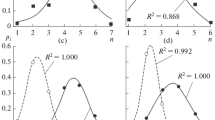Abstract
The spinel group minerals have been the focus of many studies, not only because of their economic interest, but also due to the fact that they are very useful as petrogenetic indicators. The application End-Members Generator (EMG) allows to establish, based on electron microprobe analyses (EMPA), the 19 end-members of the spinel group: MgAl2O4 (Spinel sensu stricto, s.s.), FeAl2O4 (Hercynite), MnAl2O4 (Galaxite), ZnAl2O4 (Gahnite), MgFe2O4 (Magnesioferrite), Fe3O4 (Magnetite), MnFe2O4 (Jacobsite), ZnFe2O4 (Franklinite), NiFe2O4 (Trevorite), MgCr2O4 (Magnesiochromite), FeCr2O4 (Chromite), MnCr2O4 (Manganochromite), ZnCr2O4 (Zincochromite), NiCr2O4 (Nichromite), MgV2O4 (Magnesiocoulsonite), FeV2O4 (Coulsonite), MnV2O4 (Vuorelainenite), Mg2TiO4 (Qandilite) and Fe2TiO4 (Ulvöspinel). EMG is an application that does not require an installation process and was created with the purpose of performing calculations to obtain: cation proportions (per formula unit, p.f.u.), end-members of the spinel group, redistribution proportions for the corresponding end-members in the Magnetite prism or Ulvöspinel prism and a data validation section to check the results. EMG accepts .csv data files and the results obtained can be used to represent a given dataset with the SpinelViz program or any other 2D and/or 3D graph plotting software.



Similar content being viewed by others
References
Ahmed AH, Arai S, Abdel-Aziz Y, Rahimi A (2005) Spinel composition as a petrogenetic indicator of the mantle section in the Neoproterozoic Bou Azzer ophiolite, Anti-Atlas, Morocco. Prec Res 138:225–234
Anthony JW, Bideaux RA, Bladh KW, Nichols MC (2001–2005) Handbook of Mineralogy, Mineralogical Society of America, Chantilly, VA 20151–1110, USA. http://www.handbookofmineralogy.org/
Barnes SJ, Roeder PL (2001) The range of spinel compositions in terrestrial mafic and ultramafic rocks. J Petrol 42:2279–2302
Barth TFW, Posnjak E (1932) Spinel structures: with and without variate equipoints. Z Krist 82:325–341
Bowles JFW, Howie RA, Vaughan DJ, Zussman J (2011) Introduction to the Spinel Group. Rock Forming Minerals: Non-silicates: Oxides, Hydroxides and Sulphides (2nd edition). The Geological Society of London. Vol 5: 329–362
Deer WA, Howie RA, Zussman J (1992) An Introduction to the rock-forming minerals, 2nd edn. Longman, Harlow, 696 p
Dick HJB, Bullen T (1984) Chromian spinel as a petrogenetic indicator in abyssal and alpine-type peridotites and spatially associated lavas. Contrib Miner Petrol 86:54–76
Droop GTR (1987) A General equation for estimating Fe3+ concentrations in ferromagnesian silicates and oxides from microprobe analyses, using stoichiometric criteria. Mineral Mag 51:431–435
Gaines RV, Skinner HCW, Foord EE, Mason B, Rosenzweig A, King VT (1997) Dana’s new mineralogy oxides – class 7: multiple oxides. Wiley, New York, pp 292–331
Ganuza ML, Castro S, Ferracutti G, Bjerg EA, Martig S (2012) SpinelViz: an interactive 3D application for visualizing spinel group minerals. Comput Geosci 48:50–56
Ganuza ML, Ferracutti G, Gargiulo MF, Castro S, Bjerg EA, Gröller E, Matkovic K (2014) The spinel explorer - interactive visual analysis of spinel group minerals. IEEE Transactions on Visualization and Computer Graphics. 20(12):1912–1922. doi:10.1109/TVCG.2014.2346754
Groves DI, Brotherton RH (1983) Exploration significance of chrome-spinels in mineralized ultramafic rocks and nickel-copper ores. Spec Publ Geol Soc S Afr 7:21–30
Haggerty SE (1976) Oxidation ofopaque mineral oxides in basalts. In: Rumble III D, (ed), Oxide minerals. Rev Mineral 3: H1-H100
Irvine TN (1965) Chromian spinels as a petrogenetic indicator. Part 1 theory. Can J Earth Sci 2:648–672
Irvine TN (1967) Chromian spinal as a petrogenetic indicator. Part 2. Petrologic applications. Can J Earth Sci 4:71–103
Nokia (2008). Qt Creator. Available at: http://qt.nokia.com/products/developer-tools/
Palanche C, Berman H, Frondel C (1944) Dana’s system of mineralogy – chapter 1, 7th edn. Wiley, New York
Roeder P (1994) Chromite: from the fiery rain of chondrules to Kilauea Iki Lava Lake. Can Mineral 32:729–746
Sack RO, Ghiorso MS (1991a) Chromite as a petrogenetic indicator. In, Lindsley DH (ed.) Oxide Minerals: Petrologic and Magnetic Significance. Rev Mineral 25: 323–353
Sack RO, Ghiorso MS (1991b) Chromian spinels as petrogenetic indicators: thermodynamics and petrological applications. Am Mineral 76:827–847
Spear FS (1993) Metamorphic phase equilibria and pressure-temperature-time paths. Mineralogical Society of America, Washington, DC, 799 p
Stevens RE (1944) Composition of some chromites of the western hemisphere. Am Mineral 29:1–34
Weast RC (1974) Handbook of chemistry and physics, 55th edn. CRC Press, Cleveland, 500pp
Acknowledgments
This work was financed with projects 24/H108 and 24/N028 - General Secretariat of Science and Technology of the Universidad Nacional del Sur granted to E.A. Bjerg and S. M. Castro, and PIP 112-201101-00285 - National Scientific and Technical Research Council of Argentina granted to E.A. Bjerg. G.R. Ferracutti is grateful to Ing. Susana Kahnert for helpful comments and suggestions. A previous version of this manuscript benefited from the constructive corrections and suggestions made by Dr. Cees-Jan De Hoog and Dr. Marek Locmelis.
Author information
Authors and Affiliations
Corresponding author
Additional information
Editorial handling: F. Gervilla
Electronic supplementary material
Below is the link to the electronic supplementary material.
Electronic Supplementary Data 1
Example of .csv input data entry (XLSX 14 kb)
Electronic Supplementary Data 2
Example of output .csv cations proportions (XLSX 13 kb)
Electronic Supplementary Data 3
Example of output .csv data validation (XLSX 18 kb)
Electronic Supplementary Data 4
Example of output .csv with discrimination Fe2O3 from FeO (XLSX 13 kb)
Electronic Supplementary Data 5
Example of output .csv with 19 end-members (XLSX 15 kb)
Electronic Supplementary Data 6
Example of output .csv with redistribution proportions for the corresponding prisms end-members. (XLSX 12 kb)
Electronic Supplementary Data 7
(ZIP 17.4 mb)
Rights and permissions
About this article
Cite this article
Ferracutti, G.R., Gargiulo, M.F., Ganuza, M.L. et al. Determination of the spinel group end-members based on electron microprobe analyses. Miner Petrol 109, 153–160 (2015). https://doi.org/10.1007/s00710-014-0363-1
Received:
Accepted:
Published:
Issue Date:
DOI: https://doi.org/10.1007/s00710-014-0363-1




